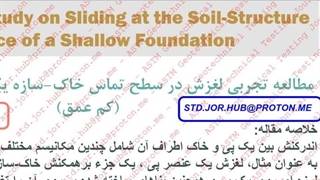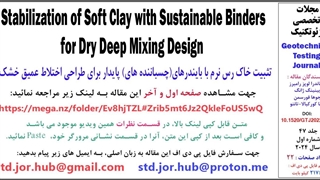
ASTM - GEOTECHNICAL TESTING JOURNAL
Stabilization of Soft Clay with Sustainable Binders for Dry Deep Mixing Design - GTJ20220255
Dry deep mixing (DDM) is a soil stabilization method widely used in countries with large soft clay areas, such as in the Nordic countries. In Finland, DDM is performed using a binder material that commonly consists of cement and lime in a 50:50 or 30:70 ratio. However, both lime and cement generate large amounts of emissions of carbon dioxide, which has led to a shift toward alternative materials in recent years. This paper presents the results of an extensive testing program where samples of Finnish sensitive soft clay are stabilized with eight different low emissions binders and tested by means of the uniaxial compression strength test. The alternative binders comprise different by-products and/or pozzolanas in varied percentages, which include lime kiln dust (LKD), biomass-based fly ash from bioenergy production, gypsum, blast
furnace slag, as well as lime and cement in reduced amounts. The tests were performed on samples stabilized at different binder densities (60, 70, 100, 120, 140, and 160 kg/m3) and after 28 days of curing to determine the optimum densities for DDM design purposes.

نظرات (۲)